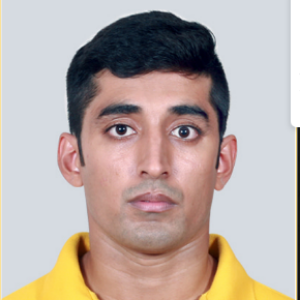Title : A bold new take on the safe deltoid split distance re-exploring safe margins for shoulder operations: An anatomical cadaveric study on commonly injured nerves around the shoulder with anthropometric and movement correlation
Abstract:
Purpose: There is always a risk of iatrogenic damage to the axillary, radial and subscapular nerves during open and arthroscopic shoulder surgeries. Examples are axillary nerve damage following deltoid splitting approach and placement of lateral working arthroscopic portal and supraspinatus nerve damage following placement of the posterior arthroscopic viewing portal. This is especially compounded due to the fact that intra operative manipulation requires changing the degree of shoulder abduction which in turn changes the distance of the above nerves from bony landmarks. The existing body of literature lacks comprehensive nerve position data with respect to multiple bony landmarks at different positions of shoulder abduction, and the correlation of these distances with humeral length and hence stature. This paper seeks to investigate these relationships and hence provide operating surgeons with additional anatomical data on safe margins which would improve the safety of shoulder procedures and help to reduce iatrogenic nerve damage.
Method: This cadaveric study examined the relation of the axillary, radial and suprascapular nerves’ with the acromion process, tip of coracoid process and greater tuberosity of the humerus (GT). We correlated this data with humeral lengths and noted the change of position of these nerves with shoulder abduction.
Results: The mean distance from the axillary nerve to (i) GT was 4.38 cm (range 3.32–5.44, SD 0.53), (ii) acromion was 6.42 cm (range 5.03–7.8, SD 0.694) and (iii) coracoid process was 4.3 cm (range 2.76–5.84, SD 0.769). Abduction brought the nerve closer by 0.36 cm, 0.35 cm and 0.53 cm, respectively. The mean distance from radial nerve to (i) GT was 5.46 cm (range 3.78–7.14, SD 0.839), (ii) acromion was 7.82 cm (range 5.4–10.24, SD 1.21) and (iii) tip of the coracoid process was 6.09 cm (range 4.07–8.11 cm, SD 1.01). The mean distance from the suprascapular nerve to the acromion was 4.2 cm (range 3.1–5.4, SD 0.575). The mean humeral length was noted to be 27.83 cm (range 25.3–30.7, SD 1.13). There was no significant correlation between these distances and humeral lengths. The calculated safe deltoid split distance from acromion process for protecting the axillary nerve was 4.3cm.
Conclusion: The distance of the axillary nerve from the greater tuberosity, acromion and coracoid tip reduced on shoulder abduction and hence it is essential to remain conscious about shoulder position when planning skin incisions around the shoulder joint. The safe margins do not change significantly with the patient stature and humeral length. The tip of coracoid process can serve as an excellent alternative bony landmark for establishing safe surgical margins if a situation arises where the GT or the acromial border are inaccessible for any reason. The traditionally stated value for safe deltoid split distance from acromion process of 5cm is too generous and should be stated as 4.3cm. Care must be taken while placing posterior viewing portal during arthroscopic rotator cuff repair to avoid damage to the supraspinatus nerve.
What will audience learn from your presentation?
(Try to list 3-5 specific items)
- This information is very relevant to shoulder trauma and arthroscopic surgeons who want data on safe surgical margins in Asian patients. The existing data exists solely for Caucasian patients.
- It also helps surgeons to plan their incisions based on differing statures and heights of the patient.
- This study is seminal in that it declares that the traditional 5cm safe margin from the acromion process for protecting the axillary nerve is overly generous and that iatrogenic nerve injury could well ensue if this margin was followed vigorously.
- We propose a safe split distance of 4.3cm and many instances of iatrogenic axillary nerve injury following deltoid splitting approach could be prevented as a result.
- This presentation will create awareness amongst surgeons on the need for awareness of shoulder position while making skin incisions for deltoid splitting approach, and placement of lateral working and posterior viewing portals in arthroscopic surgery.
- How will this help the audience in their job? Is this research that other faculty could use to expand their research or teaching? Does this provide a practical solution to a problem that could simplify or make a designer’s job more efficient? Will it improve the accuracy of a design, or provide new information to assist in a design problem? List all other benefits
This study will help shoulder surgeons to prevent case of iatrogenic axillary nerve injury following the deltoid splitting approach and placement of the lateral working arthroscopic working portal
- Prevent iatrogenic supraspinatus nerve damage during placing the posterior arthroscopic viewing portal..
- It will also draw attention to the fact that shoulder position is crucial when placing skin incisions and this changes the safe surgical margins.
- This research shows that further anatomical studies are required in cadavers of varying ethnicities, statures and shoulder positions to generate comprehensive data.
- By reducing the deltoid safe split distance to 4.3 cm from 5cm, this paper seeks to prevent many cases of iatrogenic axillary nerve damage and also to change traditional surgical teaching.



